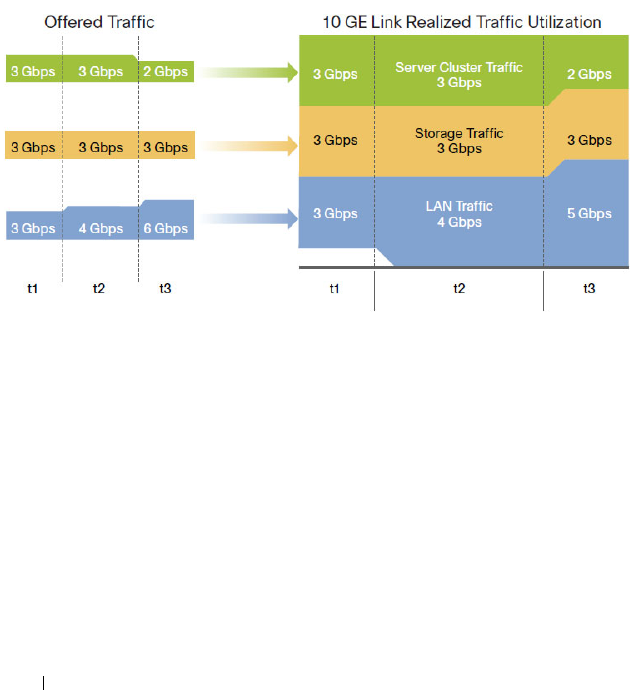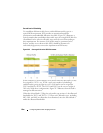
1010 Configuring Data Center Bridging Features
Second Level of Scheduling
To consolidate different traffic classes within different traffic types in a
typical DCB environment, ETS provides an operational model for
prioritization and bandwidth allocation for traffic. Figure 29-3 illustrates a
typical example that consolidates three traffic types on a single 10GE link. For
consolidation to be effective all traffic types must be serviced according to
their requirements. For instance, SAN traffic must be guaranteed to be
lossless, and the server cluster traffic (IPC) should be guaranteed a
sufficiently high priority to meet the requirement of low latency.
Figure 29-3. Converged Link on the DCB Environment
In this example, to ensure that the server cluster traffic has low latency, it may
be assigned to a TCG—say, TCG0—and a strict mode of scheduling is
enabled on this group (weight set to 0%). SAN traffic can be assigned to
TCG1 and LAN to TCG2. The TCG1 and TCG2 can be set to a weight of
50% each. With these configurations, Figure 29-3 illustrates how the load is
managed at different times.
When the offered load is 3 Gbps for each traffic type at time t1, the allocated
bandwidth for TCG1 and TCG2 is 3.5 Gbps each. All traffic types, including
IPC, SAN, and LAN, are allowed to be transmitted, since the offered load is
under the allocated bandwidth.


















